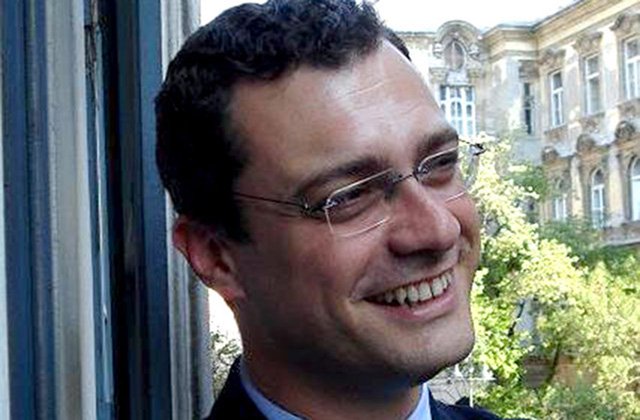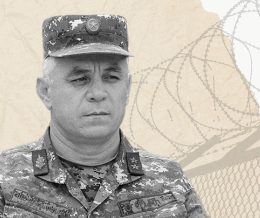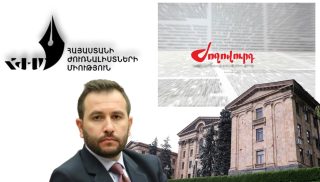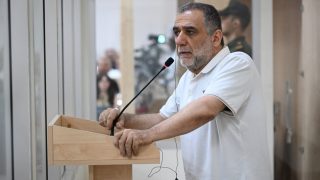
People know what the text of the CEPA says; no room left for rumors. Diogo Pinto

“168 Hours” interviewed Diogo Pinto, Director of European Friends of Armenia (EuFoA).
– Dear Mr. Pinto, the text of the Armenia-EU Comprehensive and Enhanced Partnership Agreement is published, and the agreement is already available for the Armenian public. First of all, why has EU decided to publish the text? What was the main goal of that decision?
– I guess that the EU decided to publish the text for the sake of transparency, and to put an end to certain rumors that were circulated about the content of the agreement.
Now people know what the text of the agreement says; no room left for rumors. On the other hand, one could ask why only now… but I guess this has to do with technical issues and the agreement behind the agreement: that to be done among the EU institutions and its 28 member states.
– We have the text but it is interesting to know your opinion: what kind of economic, political and trade opportunities will this agreement create for Armenia? Why is this document important for Armenia taking into consideration Armenia’s foreign policy and special relations between Armenia and Russia?
– As you said, we have the text; so, I will refrain from giving opinions on what kind of opportunities this agreement creates, because everyone can read it and many already wrote extensively about it. What I would like to stress, instead, is that this Agreement shows that both the EU and Armenia have demonstrated the necessary will to negotiate a new compromise that takes into account Armenia’s commitments to its EAEU membership and, therefore, its special relations with Russia. It is important to fully acknowledge this, as this is probably the best example of “differentiation” and “greater flexibility” that many have been asking from the EU in what concerns its Neighborhood Policy; in my opinion, the fact that this happens in such a complicated context of EU- Russia relations, makes it even more meaningful. So, what I am trying to say is that the EU made an effort to accommodate Armenia’s need for pursuing a “balanced” foreign policy, and that must be fully appreciated.
– What is the difference between The Armenia-EU Association Agreement and this agreement?
– I think we need to stop making comparisons between what could have been and what is about to become a reality. Reality is all we have. This Agreement takes into account the limitations that Armenia has as a member of the Eurasian Economic Union; therefore, and although it retains a considerable amount of content from the Association Agreement, the core trade policy elements are affected, and a DCFTA is no longer possible. Now, what is more important is what the agreement includes: the areas of political dialogue, justice and freedom, and even security are all of them substantial, and the room for cooperation huge. So, instead of discussing what is no longer possible, I would urge Armenian authorities and civil society to get serious about implementation of what is possible.
– After the signature, where will be Armenia in EaP program? We know that associated countries don’t want to be in one basket with Azerbaijan, Belarus and Armenia. Will it be fair to classify Armenia with Belarus and Azerbaijan? Can there be another option to your mind?
– As I already mentioned before, many have been asking for some time for the EU to show more “differentiation” and “greater flexibility” in its European Neighborhood Policy, as well as to adhere to its own maxim of more for more”. When it comes to the specific case of the Eastern Partnership, I think it is obvious for everyone that each country is a specific case, and attempts to put them in “baskets” will probably be doomed to fail. Now, I think that Armenia, with the new Agreement, is probably the best example of this “differentiation” and “greater flexibility”, and instead of worrying about being classified in a way or another, should focus on getting the best out of this.
The best way to do it, in my opinion, would be to implement the opportunities opened by the new Agreement as well and as fast as possible; proving itself to be a reliable and serious partner will be the best way for Armenia to show the EU that it deserves and is ready for even more.
-And what about signature? When will the EU be ready to conclude all the preparations for the signature? I am asking because we have information from very reliable sources that EU member states are doing their utmost to finish the preparations as soon as possible, but is seems to us that they won’t manage to do all the work until the summit in Brussels. When can we expect the signature?
– I can’t possibly comment on it or speak on behalf of the EU and its member -states. I am an optimist though; if the EU and its member -states are doing their utmost, I believe that the Agreement will be signed at or around the Summit. And if this is not the case, I am sure it will be signed soon after that.
-What will be the next step in Armenia-EU relations after this agreement?
– If, as I hope, both the EU and Armenia will take implementation seriously and make a success of this Agreement from its inception, I think we should start talking about visa liberalization soon. Armenia and the Armenian people deserve it, and it would certainly make EU-Armenia relations easier and opportunities more tangible. At the end of the day, this is what this kind of agreements should be about: improving the lives of citizens. Abolishing the visa regime for the citizens of Armenia to travel to the EU would be my next favorite step, and I promise that EuFoA will work hard for it.
By Araks Martirosyan























